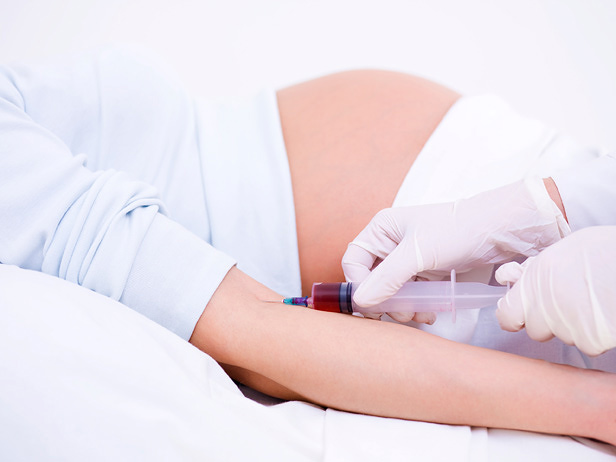Rewriting Life
Using Parents' Blood to Decode the Genome of a Fetus
The advance could lead to noninvasive ways to test for diseases in the womb.



For the first time, scientists have deciphered the genome of a fetus using only DNA from the unborn child’s parents. The advance represents a significant step forward in the effort to create noninvasive genetic tests that could assess a wide array of genetic diseases.
A small percentage of the DNA in a pregnant woman’s blood comes from her fetus, a fact that scientists have begun exploiting to create prenatal genetic tests that don’t require invasive sampling of fluid from the uterus. So far, tests have been limited to specific measures such as the genetic aberration that leads to Down syndrome; but the ability to sequence the entire fetal genome suggests that parents could someday get a much broader picture of their baby’s disease risk before birth.
In a previous paper, a team led by Dennis Lo, director of the Li Ka Shing Institute of Health Sciences in Hong Kong, demonstrated a strategy for deducing the genetic code of a fetus by sampling its mother’s blood.
Lo’s team found that enough fetal DNA is present in a mother’s blood to capture its entire genome; they showed how information about the maternal haplotype—blocks of genetic variants that are usually inherited together—could be used to reconstruct the fetal genome together with the sequences of both parents. But at the time, the ability to reconstruct haplotypes across the entire genome was limited, and the researchers still had to rely on an invasive procedure to obtain some fetal DNA for their analysis.
In this latest study, published today in Science Translational Medicine, a team led by Jay Shendure (a TR35 winner in 2006) at the University of Washington in Seattle took the approach further. The researchers first sequenced the parental genomes using blood from the mother and saliva from the father. This enabled them to find the possible genetic variants the parents could have passed on to the fetus.
Researchers then analyzed the mother’s plasma to reconstruct the fetal genome. The presence of DNA sequences from the father could be used to determine which of his variants he had passed to the fetus. Determining which variants the mother passed on to the fetus is trickier, says first author Jacob Kitzman, because most of the DNA available in the plasma is hers.
The team applied a statistical technique it had previously developed to deduce the mother’s haplotype arrangement that she had inherited from her own parents, which “goes a long way to predicting the arrangement passed on to the fetus,” Kitzman says. The researchers used this information to create a statistical model of which variants were inherited from each parent, which they did with 98 percent accuracy (evaluated against a DNA sample from the baby collected after birth).
Lo says that because of their more complete sequencing, the University of Washington researchers “were able to deduce the fetal genomic map with much higher resolution than we have.” Another advance is an analytical method that predicted 39 of 44 mutations in the fetus that were not inherited from either parent. Such “de novo” mutations are thought to play a role in diseases with complex genetic origins. But Lo points out that the analysis identified a great deal more false-positive mutations, so more work is necessary to refine the technique.
Lo and others have already developed noninvasive tests for Down syndrome using the fetal DNA present in a mother’s blood. Kitzman says there are around 3,500 known disorders involving small changes in a single gene, and a more comprehensive sequencing of the genome “would, in theory, allow you to scan for all these genes in a comprehensive way.”
But an even more difficult task will be interpreting the results, since the relationship between genetics and disease is not always clear, and knowing such information will undoubtedly pose ethical challenges.